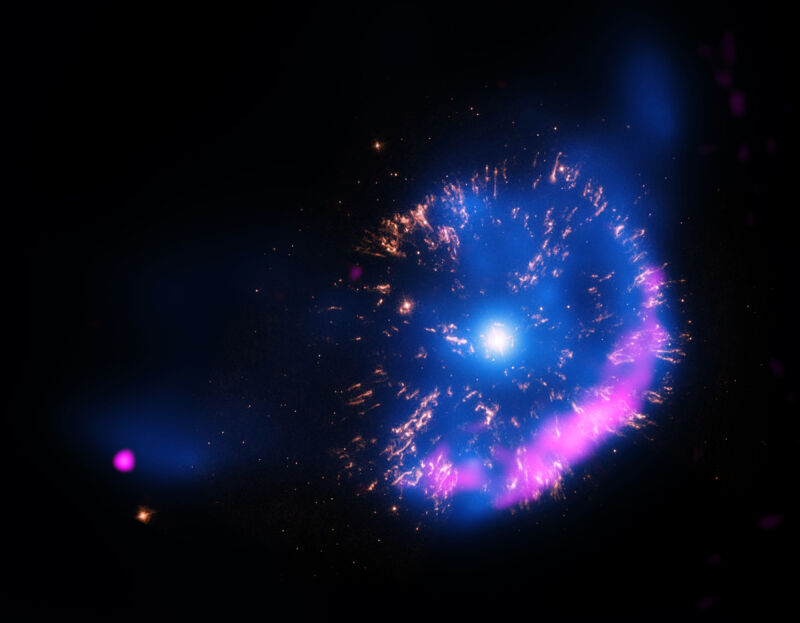When you look at the northern sky, you can follow the arm of the Big Dipper as it arcs around toward the bright star called Arcturus. Roughly in the middle of that arc, you'll find the Northern Crown constellation, which looks a bit like a smiley face. Sometime between now and September, if you look to the left-hand side of the Northern Crown, what will look like a new star will shine for five days or so.
This star system is called T. Coronae Borealis, also known as the Blaze Star, and most of the time, it is way too dim to be visible to the naked eye. But once roughly every 80 years, a violent thermonuclear explosion makes it over 10,000 times brighter. The last time it happened was in 1946, so now it’s our turn to see it.
Neighborhood litterbug
“The T. Coronae Borealis is a binary system. It is actually two stars,” said Gerard Van Belle, the director of science at Lowell Observatory in Flagstaff, Arizona. One of these stars is a white dwarf, an old star that has already been through its fusion-powered lifecycle. “It’s gone from being a main sequence star to being a giant star. And in the case of giant stars, what happens is their outer parts eventually get kind of pushed into outer space. What’s left behind is a leftover core of the star—that’s called a white dwarf,” Van Belle explained.
The white dwarf stage is normally a super peaceful retirement period for stars. The nuclear fusion reaction no longer takes place, which makes white dwarfs very dim. They are still pretty hot, though, and they're super dense, with a mass comparable to our Sun squeezed into a volume resembling the Earth.
But the retirement of the white dwarf in T. Coronae Borealis is hardly peaceful, as it has a neighbor prone to littering. “Its companion star is in the red giant phase, where it is puffed up. Its outer parts are getting sloughed off and pushed into space. The material that is coming off the red giant is now falling onto the white dwarf,” Van Belle said.
Ticking time bomb
And it doesn’t take much littering to make the white dwarf explode. “The material from the red giant will accumulate on the white dwarf’s surface until it forms a layer that’s actually not that thick. Just a few meters—the depth of a deep swimming pool,” Van Belle explained. Most of the material coming off the red giant is hydrogen. And since the red dwarf is still hot, there will eventually be a spark that triggers a runaway nuclear fusion reaction. “That is what causes the explosion,” Van Belle said.
The explosion is a nova, which means it doesn’t kill either the white dwarf or the red giant as a supernova would. “Only about 5 percent of the hydrogen layer fuses into heavier elements like helium, and the rest just gets ejected into space. Then the process starts all over again because the explosion isn’t large enough to disrupt the red giant, the donor of all this hydrogen, so it just keeps doing its thing,” Van Belle told Ars. This is why we can predict this event with such precision.



3175x175(CURRENT).thumb.jpg.b05acc060982b36f5891ba728e6d953c.jpg)
Recommended Comments
There are no comments to display.
Join the conversation
You can post now and register later. If you have an account, sign in now to post with your account.
Note: Your post will require moderator approval before it will be visible.